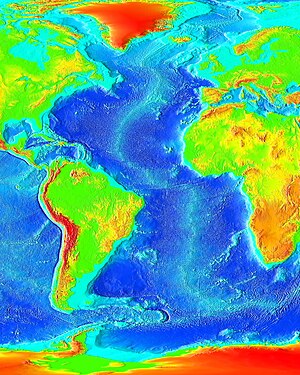Last summer was a washout in my neck of the woods – literally, as we had the wettest summer on record, where it rained so often, some may have forgotten what the sun actually looked like.
This summer, the sun is back, but there just isn’t the warmth associated with that summer’s sun. Temperatures are about two to three degrees cooler than normal temperatures for this time of year.
Not that I’m complaining all that much – I prefer the moderate summer conditions we are having, to the blistering heat we typically get in July and August in Canada’s largest city, Toronto.
But these cooler temperatures are bad news for those of us watching out for our home, planet Earth. Cooler temperatures in the summer, and warmer temperatures in the winter, are symptoms of global warming.
Wait a sec . . . global warming should increase temperatures, not cool them – right?
Not necessarily, all weather systems are part of the bigger picture, and although our climatic temperatures have increased over the years, we’ve seen other side effects caused by the changes to our world.
 Image via Wikipedia
Image via Wikipedia
What really makes it warmer or cooler for us doesn’t actually happen on land, it happens out at sea. Imagine a large conveyor belt underneath the world’s oceans. This conveyor belt stretches from the Arctic Ocean in the north, all the way down to the Antarctic in the south. The Great Conveyor – as it is often called – flows through the Atlantic Ocean, bringing cold Arctic water from the north, mixing it with warmer waters as it flows south, and then carries that warm water back up north, as it flows on the other of the Atlantic, back up northwards.
Scientists call this the thermohaline circulation, which is powered by the different densities of fresh and saltwater. Tidal patterns, such as the Gulf Stream, create water-based waves. The saltier the water, the more dense, so it falls to the bottom, while the warmer water remains at the top. As the water flows through this great conveyor, water temperatures increase or decrease at different depths along the way, depending on the land masses encountered at the specific point in the conveyor.
And, to make a long story short, depending on where in the world
 Image via Wikipedia
Image via Wikipedia
Winds flowing over the water will warm or cool, depending on the temperatures of the water – resulting in either warmer or cooler surface winds on land.
Because of global warming, scientists have become ever more concerned with this great conveyor belt of global waters. As temperatures rise due to ozone depletion, allowing more of the sun’s rays into our world, the polar ice caps melt at an alarming rate. This sudden increase in cold water flows into the once balanced conveyor belt of oceanic patterns, lowering the temperatures of all the water systems it goes through, resulting in colder climates for everyone.
This is – as one theory goes – how an ice age may begin. As global temperatures increase from the sun, the ices at both ends of our Earth melt, decreasing the temperatures of our oceans, and eventually decreasing the temperatures of our planet.
It also may explain the increase in severe storms over the years, as surface temperatures cool, water temperatures usually rise, because all that cold air is being swept off the surface of the water via the wind. Storm systems get their energy as they are carried over warm bodies of water – the heat they pick up from the moist air increases their size and that increases their overall force.
![Reblog this post [with Zemanta]](http://img.zemanta.com/reblog_b.png?x-id=eb35b54d-2857-442d-81c2-73a823dfbb95)








No comments:
Post a Comment